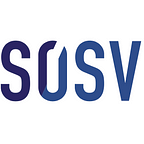Written by Ryan Bethencourt
At SOSV and IndieBio, we invest with a long view: to build biotechs with an eye on building both the word of today and the world of tomorrow. So what will the world of 2030 likely look like, as the global population increases by about 1.5 billion people to 8.5 billion?
Megatrend 1: Beyond Poverty
Both poverty reduction and a dramatic growth in the global middle class will lead to the first time where the vast majority of humanity will not be in poverty, a dramatic shift from our world today. As we’ve already seen with an emerging middle class, the needs/wants of those who have emerged out of the basic needs will lead to people who want a better quality of life, better healthcare and more consumer products.
On healthcare delivery, we believe healthcare will be supplemented with improved bedside diagnostics, telemedicine and smart systems like V-Sense Medical that will assist and in many cases diagnose and treat disease without human intervention. Physicians of the future (whether digital or human) will be assisted by a deep understanding of the human genome, and this will lead to ultra-personalized human medicine. It seems likely that average human lifespans will also increase as a result of a huge acceleration of global healthcare, leading to new challenges in medical care past the age of 100 as ultracentenarians will become the new old age.
Today, the middle class lifestyle in the West is unsustainable. We consume too much and recycle too little. Luckily, entirely new industries are emerging to provide entirely new biomaterials or replace those we’re used to, from brewed spidersilk coats to bio-nylons brewed out of genetically modified yeast. The manufacturing industries of the future will be based on molecular scale manufacturing: not fantasy but real technology, developed with genetically modified bacteria, yeast and fungi that will remove our dependence on oil and other unsustainable resources. Converting sugar to a product of your choice is something you’ll hear a lot more. We already have molecular nanotechnology: it’s called biology, and it’ll build our world.
Megatrend 2: The Rise of the Global Megacities
By 2030, Asia will have surpassed the combined GDP of America and Europe. The average consumer will be global, and likely much more Asian and African than Western.
The world’s Megacities, cities with over 20 million people and growing, will require entirely new infrastructures for keeping their citizens healthy in body, mind and spirit. We’ll be entering new territory for humanity, and with it we’ll require entirely new technologies. Waste treatment, bioremediation, emerging infectious disease monitoring, and deploying healthcare to all citizens in these emerging megacities will be a challenge, and some regions with over 100 million people will force technological acceleration even faster.
Megatrend 3: Humanity’s Growth
As the global population continues to grow to 8.5 billion people, the West and some parts of Asia will also continue to grey. It’s likely we’ll grey a lot more as the average human lifespan continues to rise. We’ll start to break the ceiling of human longevity past 120 years with advances in regenerative medicine for cancer, cardiovascular disease and neurodegenerative diseases. One of the biggest challenges will be treating the diseases of old age and also those that emerge as a result of much larger and denser human cities. We’ll need faster monitoring, diagnostics, biomedical research tools, and faster methods of developing treatments, from decades, to years, to weeks, to days for the development of a therapeutic.
We’ll also likely see the emergence of entirely new fields of human medicine, improved performance, better lungs, hearts, eyes, kidneys — improving upon nature’s design. The day of engineering humans has already arrived, as we’ve already seen in China, with the CRISPR modification of a human embryo. By 2030, it’s likely some regions, like China, will allow the use of these new genetic modification technologies in the modification of humanity itself.
Megatrend 4: Feeding a Hungry World
Our view at IndieBio is that the world will want access to the basic tools of genetic modification (like those at Amino Labs) for tailoring crops to local environments to feed the world of the future — which, in addition to requiring a lot more food, could be drier, wetter, hotter or colder as the world’s weather patterns change due to increased CO2.
The emerging middle class will want the same access to proteins: both plant and animal-based proteins that we expect in the West today. These needs will be met by companies that will emerge out of the post-animal bioeconomy. Expect to see milk, cheese, eggs, meat, gelatin, seafood, and other previously animal-based foods that aren’t derived from animals in the classical sense, but either grown or brewed (microbially or yeast derived) in a bioreactor. Companies like Clara Foods, Crevi, Gelzen and New Wave Foods are doing this already. The future of food will be based on building it from the molecule on up, as our IndieBio co-founder Ron Shigeta is fond of saying.
The world of the future in 2030 will be based on precise molecular manufacturing, built with biology. We have the tools, and the products already exist.
Originally published at sosv.com on November 21, 2015.
